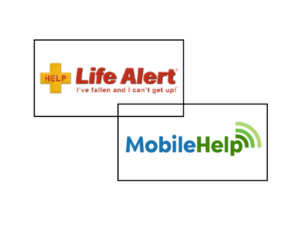A caregiver care plan form is a vital tool that will ensure your loved one receives the quality care they deserve. As a home care agency owner, I would create a caregiver care plan form with each client. This way my care team and the client’s family would all be on the same page to ensure quality care.
In many cases, families don’t really know what they need, they just know that they need help. Walking them through the caregiver care plan allows them to think through their care needs and create a detailed plan of care
This template, that you can download below, will address the care recipient’s personal needs, minimize errors, and adapt to changing health conditions.
How to Develop a Caregiver Care Plan Form
First, begin by collecting the information needed that will go into your care plan. Start with medical history and current health status of the care recipient. You’d want to note down any chronic conditions, medications, potential allergies, and hospital stays. This helps you understand what medical support the individual needs, anticipate possible health issues, and swiftly tackle them if they occur.
What is often overlooked is the person’s personal preferences. Document things like their preferred wake-up time, favored meals, and cherished activities. It’s not just about the medical side of things; it’s also about respecting their lifestyle and choices, which is paramount for their emotional well-being.
You’re also going to want a comprehensive list of emergency contacts. It should go beyond just immediate family to include doctors, specialists, and other professionals involved in the care recipient’s health. This goes a long way in ensuring a quick reaction in case of a health crisis or other urgent situations.
Map it Out: Goals, Tasks, and Communication
Next, start creating the care map. Utilize the care plan and caregiver checklist provided below. Here are some things to consider.
- Set Goals. The first step is to identify both short-term and long-term care goals. This will shape the day-to-day support and the overall direction of care. Short-term goals might focus on specific health outcomes, like pain management or rehabilitation after a surgery. Long-term goals often revolve around maintaining a certain quality of life or reaching a level of independence.
- Determine ADL’s. The next critical element is determining the daily living activities (ADLs) and the instrumental activities of daily living (IADLs) that your care recipient needs support with. Does the individual need help with dressing or bathing? What about managing their finances or getting around town? Listing these tasks gives you an outline for the daily and weekly schedules.
- Set a daily schedule. A daily schedule is essentially the backbone of the care plan; it ensures that tasks are performed at the right times and by the right people. For instance, medications might need to be administered at specific times, while other tasks, like housekeeping, could be more flexible. A weekly or monthly calendar can keep track of less frequent tasks like doctor’s appointments or social outings.
- Write out specific task instructions. A crucial step that shouldn’t be overlooked is writing out explicit task instructions. This isn’t just about knowing what needs to be done; it’s making sure each task is done correctly. Especially if a task requires special knowledge or technique, having step-by-step instructions can be a lifesaver. Remember, clarity is key.
- Create a communication plan. Lastly, establish a clear communication plan. Caregivers should be clear on how they document and relay information about the care recipient’s status. This should include regular updates and any notable changes in health or mood. These protocols ensure that everyone—caregivers, family members, and healthcare professionals—are aligned and informed.
Monitor and Be Flexible
Regular assessments become the heartbeat of your plan, ensuring that it evolves alongside the care recipient’s changing needs. Embrace these assessments with an open mind, always looking for ways to enhance their day-to-day life.
Flexibility is at the core of impactful caregiving. No matter how detailed your initial plan, you’ll find that conditions and preferences can shift unexpectedly. When they do, your ability to adapt the care plan swiftly and seamlessly will make all the difference. It’s a balancing act of staying true to the original objectives while accommodating new circumstances. Remember, the care plan is a dynamic document and needs to be changed and updated from time to time.
In Conclusion
I have created many caregiver care plans over the years so please reach out in the comments section below if you have any questions. I hope this template helps you and your caregiving team stay on track.
You may also be interested in these articles.
Recommended For You

What Is A Caregiver Referral Agency? Should I Use One?
As caregiving needs grow, finding the right support becomes crucial for families and individuals. Two main options for obtaining caregiving assistance are caregiver referral agencies and in-home care agencies. A …

Mobile Help Vs Life Alert – Comparison Review
If you are a caregiver or family member caring for an older adult, ensuring their safety and well-being is paramount. Medical alert systems provide a critical lifeline in emergencies, offering …

Best Medical Alert Devices For Seniors
In this article, I will show you the top 5 best medical alert devices for seniors. Think of these devices as personal emergency response systems that stand by 24/7, ready to spring into action if there’s trouble. They allow seniors the opportunity to maintain their independence and ensure their safety.

How to Stay Safe in the Bathroom – 9 Tips
The bathroom is the least safest room in the house and it is where the majority of falls and accidents occur among older adults. It is estimated that 1/3 of …

Assisted Living vs. Home Care
With age comes less independence and, for many, the need for help with many of the activities of daily living. The question I get from many people trying to navigate through the myriad of care options is “what are the advantages of assisted living vs. home care”? And, how do

Does Medicare Cover Home Caregivers
The one question I get asked quite often is does Medicare cover home caregivers? While the simple answer is no, there are some exceptions. In this article I will talk …


